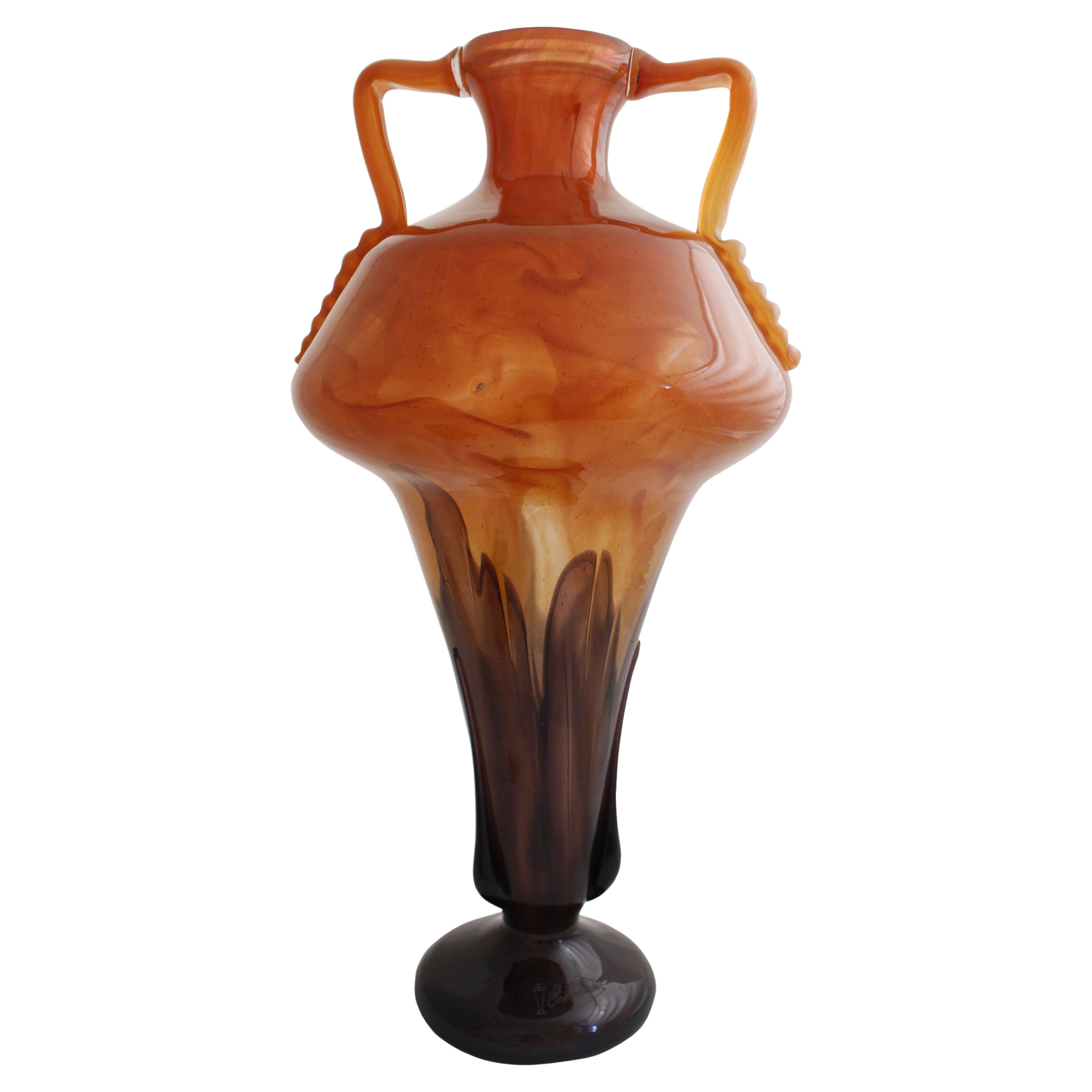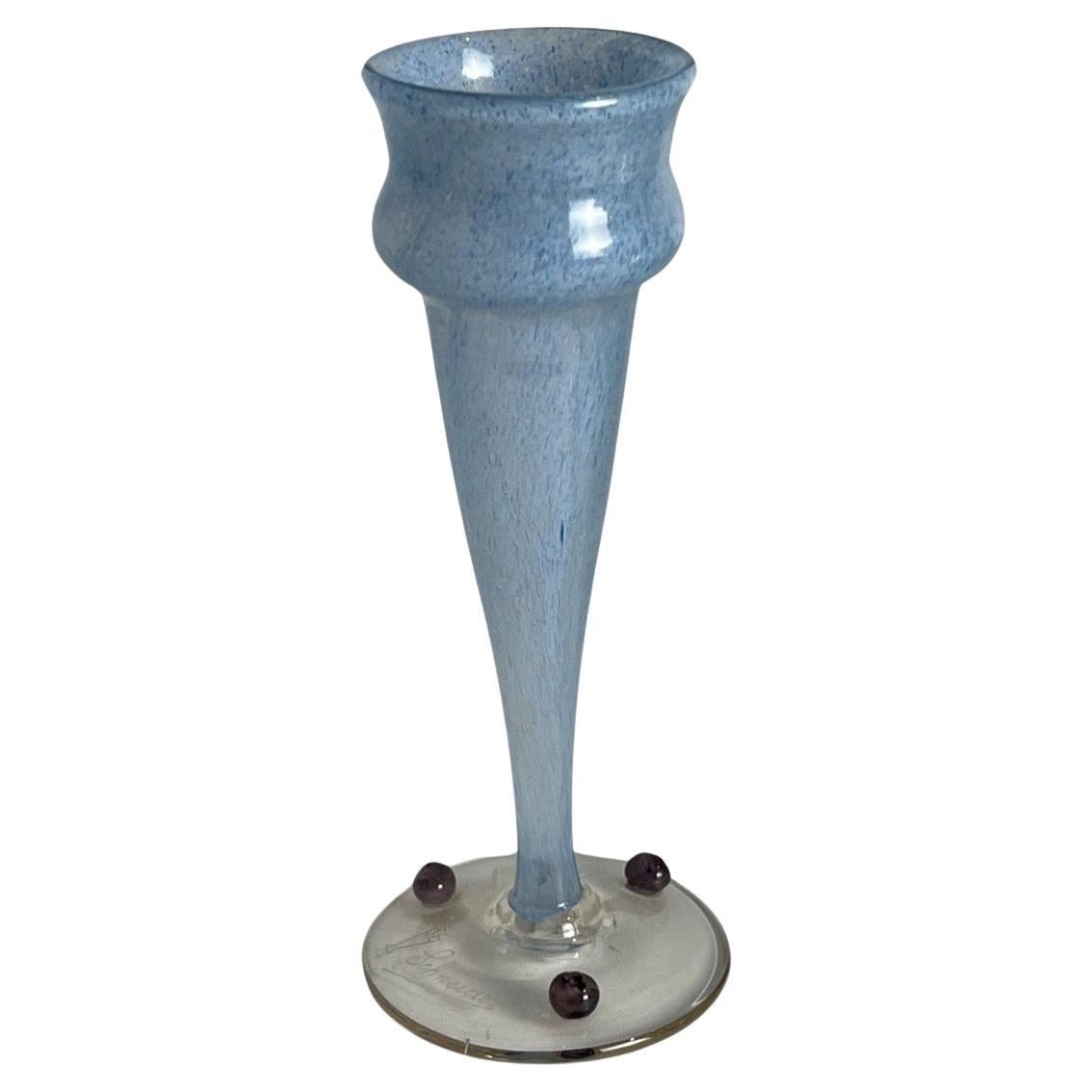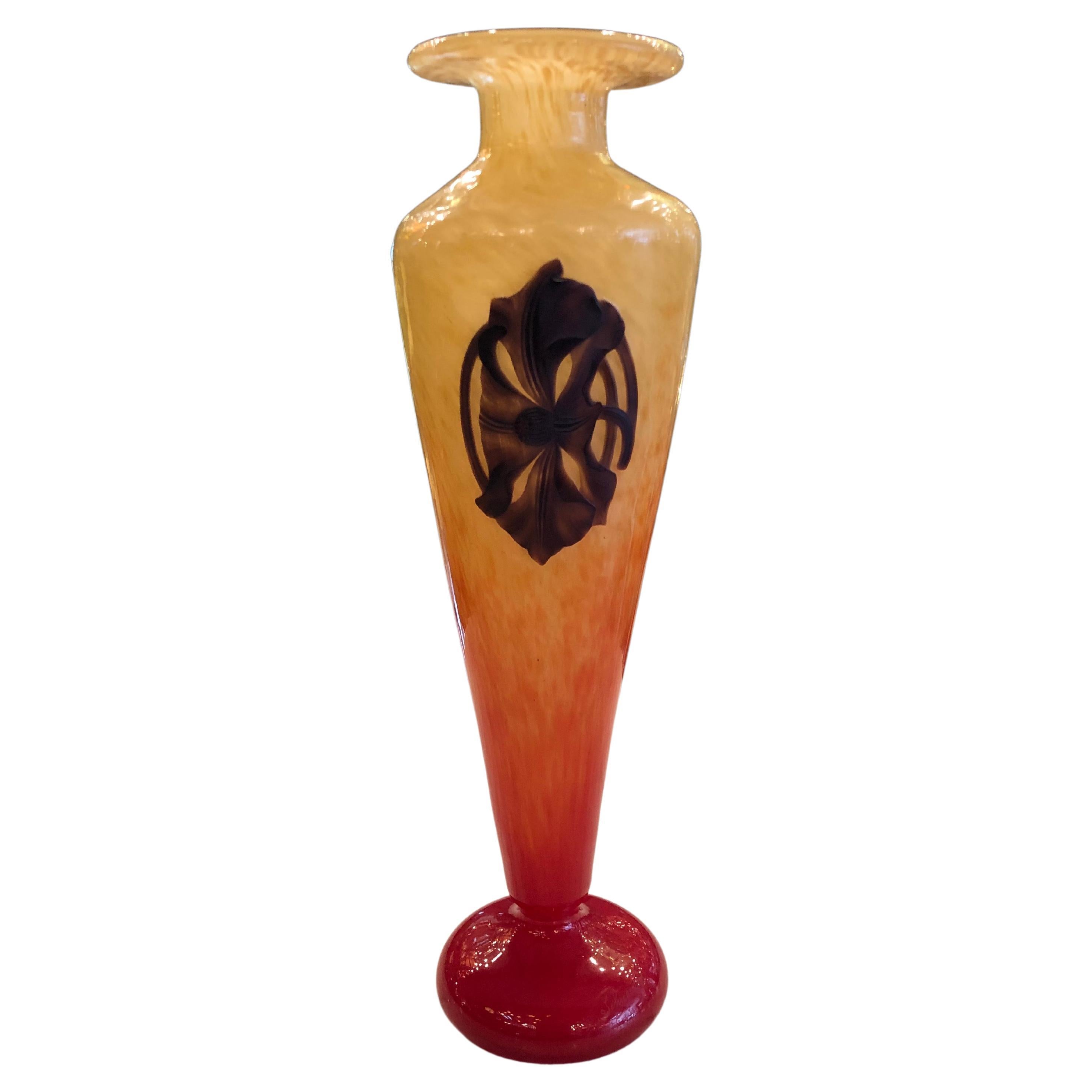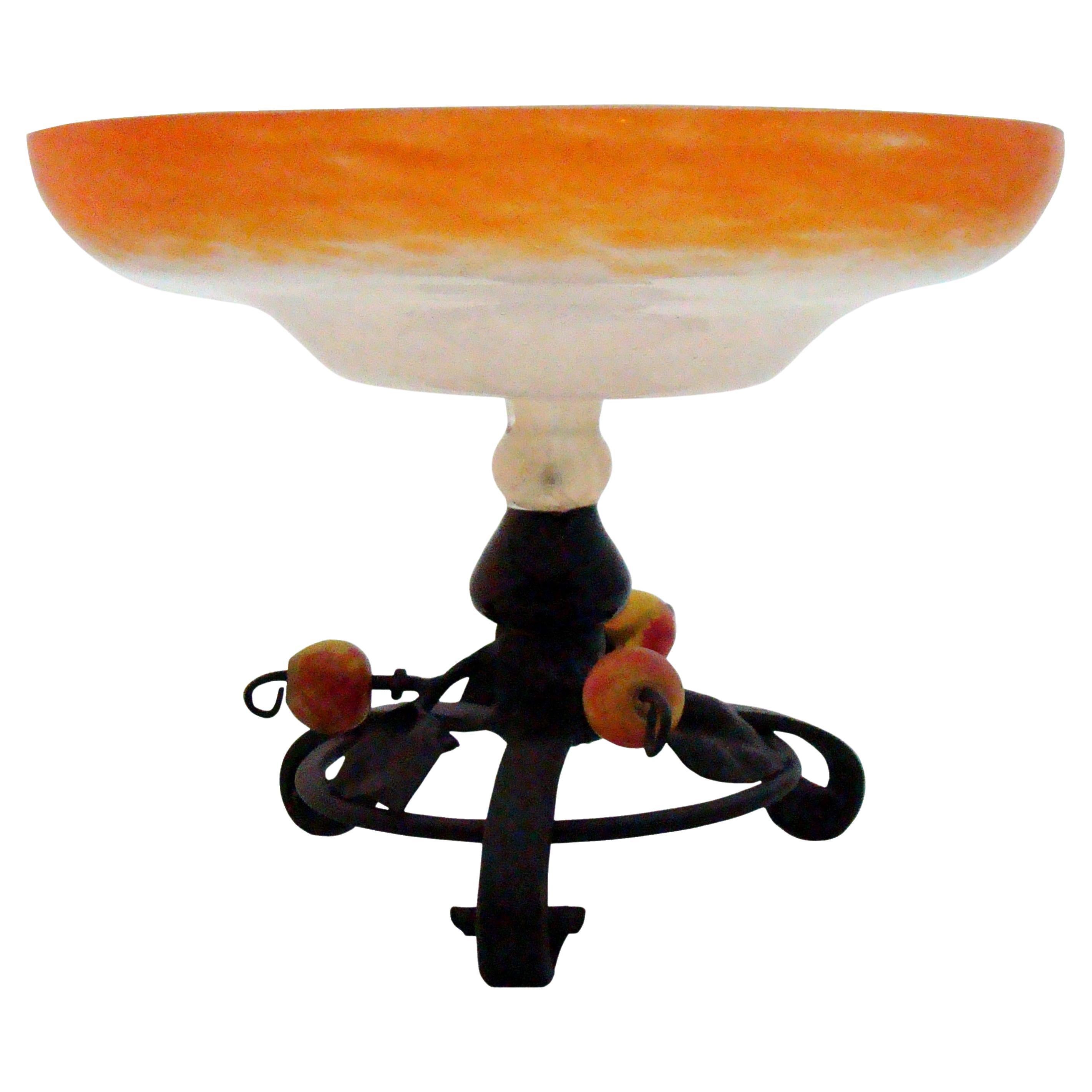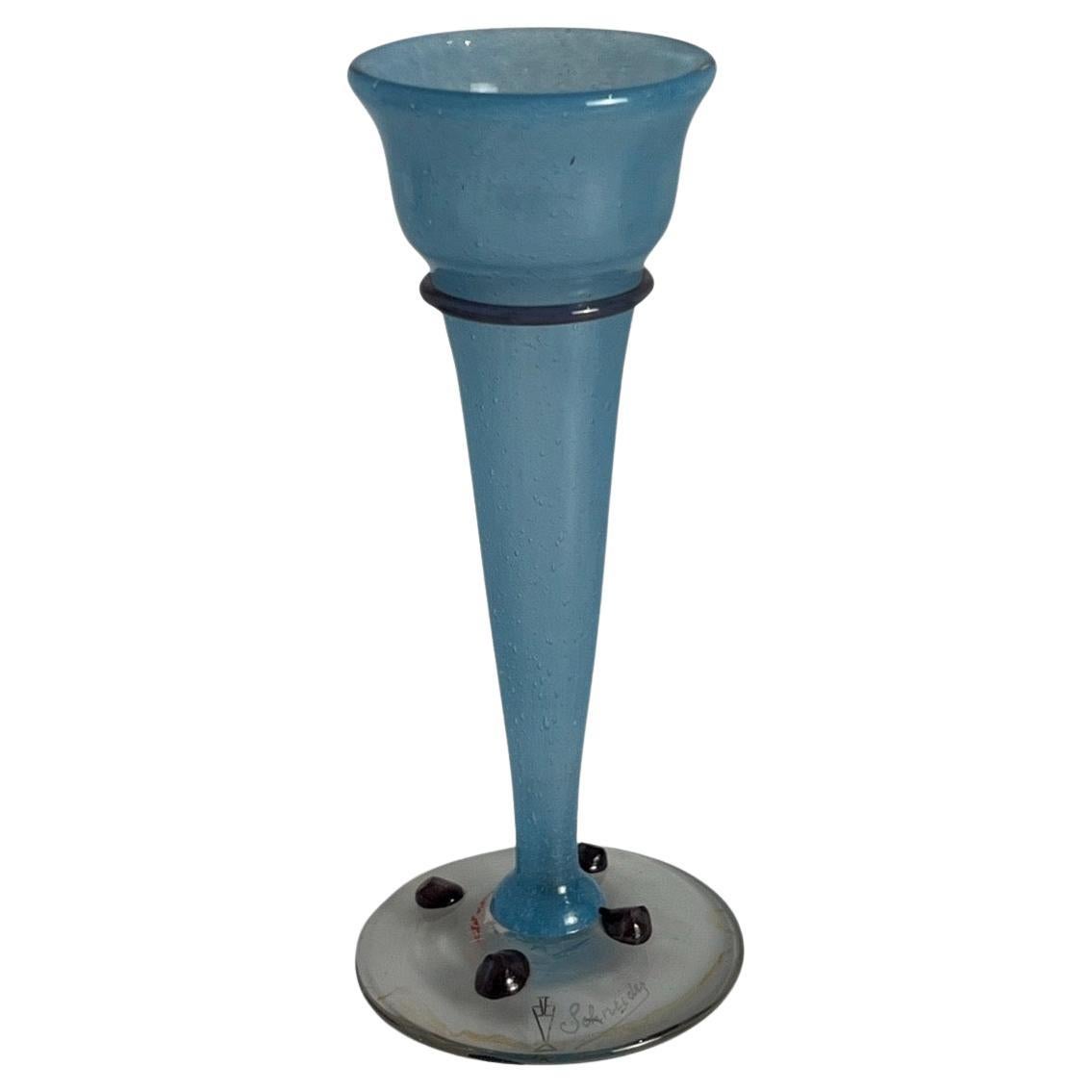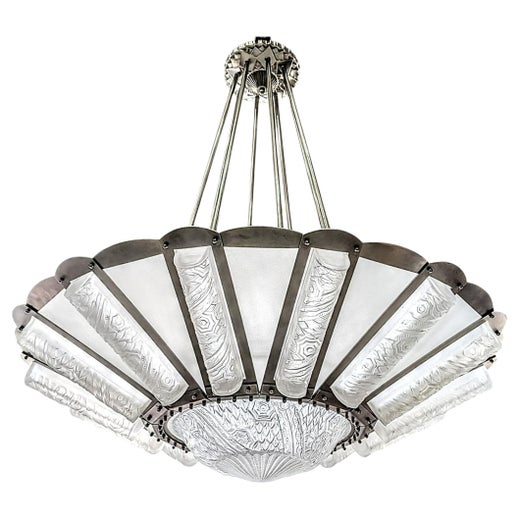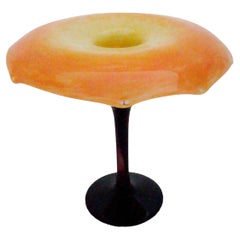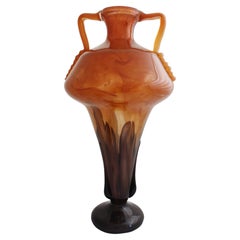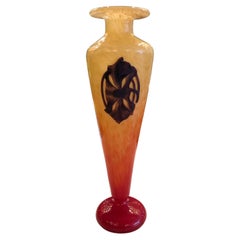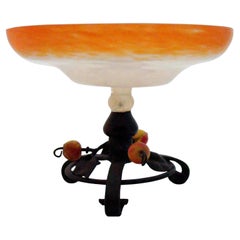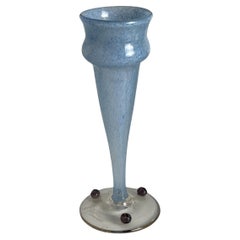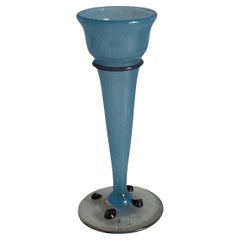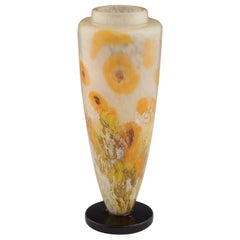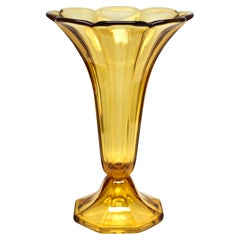Unusual Vase Design: ( Coupe bijou) Schneider, France, With application, 1922
Informazioni sull’articolo
- Creatore:Charles Schneider (Designer)
- Dimensioni:Altezza: 16 cm (6,3 in)Diametro: 18 cm (7,09 in)
- Stile:Art Déco (Del periodo)
- Materiali e tecniche:Vetro artistico,Appliqué
- Luogo di origine:
- Periodo:
- Data di produzione:1922
- Condizioni:Usura compatibile con l’età e l’utilizzo.
- Località del venditore:Ciudad Autónoma Buenos Aires, AR
- Numero di riferimento:Venditore: G-5101stDibs: LU6785236014382
Charles Schneider
La Vetreria Schneider (Verreries Schneider), fondata dai fratelli Charles ed Ernest Schneider a Epinay-sur-Seine, in Francia, nel 1917, è stata tra i principali produttori di vetro artistico tra le due guerre mondiali, creando vasi e apparecchi di illuminazione dai colori esuberanti sia negli stili Art Nouveau che Art Deco. La fabbrica ha raggiunto il suo apice negli anni '20, quando ha creato lampadari iconici e vasi in vetro cammeo squisitamente decorati che sono ancora oggi molto richiesti.
Nati nell'ultimo quarto del XIX secolo a Château-Thierry, vicino a Parigi, Charles ed Ernest Schneider si trasferirono con la famiglia in giovane età a Nancy, un importante centro di design Art Nouveau, particolarmente noto per il vetro. Tra i maestri della città c'era lo studio di cristalli Daum, dove entrambi i fratelli lavoravano all'inizio del XX secolo: Ernest si occupava delle vendite e Charles riceveva una formazione nel laboratorio di incisione e decorazione, imparando contemporaneamente a disegnare e modellare con Henri Bergé e frequentando l'École des Beaux-Arts di Nancy. Nel 1904 si iscrisse all'École Nationale Supérieure des Beaux-Arts di Parigi, dove studiò pittura e incisione su metallo ed espose regolarmente nella sezione incisione del Salon de la Société des Artistes Français, ricevendo due volte un premio.
Intorno al 1912 i fratelli e il loro amico, l'architetto Henry Wolf, acquistarono una piccola fabbrica di vetro specializzata in lampadine, ribattezzandola Schneider Frères et Wolff. I soci invogliarono un gruppo di circa 20 operai del laboratorio Daum a unirsi all'azienda, che produsse vasi e lampade a cammeo di alta qualità fino allo scoppio della Prima Guerra Mondiale, nel 1914, quando Charles, Ernest e la maggior parte degli operai furono chiamati a combattere. Nel 1917 gli Schneider vennero congedati e riaprirono la fabbrica, inizialmente producendo pratici oggetti in vetro per gli ospedali. Dopo la guerra, per finanziare il loro rientro nel mercato del vetro artistico, vendettero le azioni della società, ora denominata Société Anonyme des Verreries Schneider. Il successo del Gli eleganti bicchieri e i vasi a cammeo in stile Art Nouveau prodotti permisero ai fratelli di riacquistare le azioni, e a quel punto rinominarono la fabbrica Verreries Schneider.
Quando nel 1918 un incendio distrusse gli studi Gallé, gli Schneider offrirono uno spazio a un gruppo di artisti dell'azienda affinché potessero continuare la produzione. In cambio, insegnarono a Charles Charles la marqueterie de verre. Simile all'intarsio del legno, questo processo prevede il taglio di sezioni di una superficie di vetro e il loro riempimento con pezzi di colore contrastante. Nel 1921, Schneider registrò la sua tecnica per la realizzazione di lampade e vasi in vetro cammeo - esemplificata in questo pezzo dei primi anni '20 -. che firmò "Le Verre Français" o "Charder", quest'ultimo forse un portmanteau che combinava il suo nome e cognome. Queste opere sono state molto apprezzate e vendute nei grandi magazzini francesi, tra cui le Galeries Lafayette e Le Bon Marché. I pezzi più elaborati e unici dello studio erano firmati "Schneider" e offerti alle gallerie d'arte di Paris come Au Vase Etrusque e Delvaux.
Gli Schneider parteciparono all'Esposizione Internazionale delle Arti Decorative e Industriali Moderne di Parigi del 1925, alla quale Charles fu membro della giuria. L'azienda era al suo apice e stava espandendo sia il suo repertorio di design che il numero di lavoratori, fino a raggiungere i 500 dipendenti. Durante questo periodo, iniziò l'allontanamento dalle forme organiche dell'Art Nouveau verso gli am designs più geometrici dell'Art Deco, con alcuni pezzi che incarnano una sorta di stile di transizione, come questo lampadario. Charles iniziò anche a sperimentare con le polveri pigmentate, vetro finemente frantumato e mescolato con ossidi metallici, che producevano colori brillanti e iridescenti quando venivano applicati su una superficie di vetro.
Gran parte della produzione di vetro artistico della fabbrica veniva venduta negli Stati Uniti. Quando il mercato azionario statunitense crollò nel 1929, la domanda fu praticamente azzerata e l'azienda lottò per rimanere a galla per tutti gli anni '30. Ernest morì nel 1937 e durante la Seconda Guerra Mondiale la fabbrica fu sequestrata dalle truppe tedesche e utilizzata come mensa. Nel 1950, Charles e suo figlio fondarono una nuova fabbrica chiamata Cristalleries Schneider a Epinay-sur-Seine, che per diversi anni produsse vasi di vetro soffiato a bocca libera, piccole sculture e apparecchi di illuminazione riscuotendo un certo successo. Charles Schneider morì nel 1952 e la fabbrica chiuse nel 1981.
- SpedizioneRecupero del preventivo…Spedizione da: Ciudad Autónoma Buenos Aires, Argentina
- Politica di reso
Altro da questo venditore
Mostra tuttoVintage, Anni 1920, Francese, Art Déco, Vetro
Vetro artistico
Vintage, Anni 1920, Francese, Art Déco, Vetro
Vetro artistico
Vintage, Anni 1920, Francese, Art Déco, Vetro
Vetro artistico
Vintage, Anni 1920, Francese, Art Déco, Vetro
Ferro
Vintage, Anni 1920, Francese, Art Déco, Vetro
Ferro
Vintage, Anni 1920, Francese, Art Déco, Vetro
Vetro artistico
Ti potrebbe interessare anche
XX secolo, Francese, Art Déco, Vasi
Vetro
XX secolo, Francese, Art Déco, Vasi
Vetro
Vintage, Anni 1920, Francese, Art Déco, Vetro
Vetro artistico
Vintage, Anni 1930, Belga, Art Déco, Vetro
Vetro
Vintage, Anni 1930, Francese, Art Déco, Vasi
Vetro artistico
Inizio XX secolo, Francese, Art Déco, Vetro
Vetro

